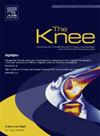Does the amount of noise generated differ between manual and robotic TJA?
IF 2
4区 医学
Q3 ORTHOPEDICS
引用次数: 0
Abstract
Background
The purpose of this study was to evaluate whether noise that is generated during manual and robotic-assisted total joint arthroplasty (TJA) differs and if that noise exceeds the Occupational Safety Health Administration (OSHA) action limits.
Methods
Personal dosimeters were used to record the decibel (dB) level during manual and robotic-assisted total hip and knee arthroplasty (THA/TKA). The primary surgeon wore the dosimeter on their person. All robotic procedures were performed with the use of image-based robotic arm aided technique. Peak decibel levels (LCPeak) and continuous decibel levels (LAeq) were captured in each procedure. 2-tailed student T-test was calculated to evaluate a difference between LAeq and LCPeak values between groups. An exposure calculator was used to calculate the 8-h Time-Weighted-Average (TWA).
Results
A total of 40 procedures were recorded; 10 for each robotic and manual THA and TKA. The mean LAeq dB levels for the robotic THA and TKA were 71.4 (SD 1.9) and 69.7 (SD 2.3) dB, and for manual THA and TKA levels were 69.8 (SD 2.4) and 71.3 (SD 2.4) dB. The max LCPeak decibel in each group did not exceed the OSHA peak sound pressure limit. Average LCPeak values in manual THA were higher than robotic THA (P = 0.01). Manual and robotic TKA values showed no difference. No groups exceeded the 8-h TWA limit.
Conclusion
TJA surgeons have significant noise exposure during surgery regardless of surgical technique; however, peak sound pressures and 8-h TWA dB levels discovered during mTJA and rTJA did not exceed OSHA limits.
人工TJA和机器人TJA产生的噪音量不同吗?
本研究的目的是评估人工和机器人辅助全关节置换术(TJA)过程中产生的噪音是否不同,以及噪音是否超过职业安全健康管理局(OSHA)的行动限制。方法采用个人剂量仪记录人工和机器人辅助全髋关节置换术(THA/TKA)时的分贝水平。主治医生把剂量计戴在身上。所有机器人手术均使用基于图像的机械臂辅助技术进行。在每个程序中捕获峰值分贝水平(LCPeak)和连续分贝水平(LAeq)。计算双尾学生t检验,评价组间LAeq和LCPeak值的差异。使用曝光计算器计算8小时时间加权平均值(TWA)。结果共记录40例手术;每台机器人和手动THA和TKA各10台。机器人THA和TKA的平均LAeq dB水平分别为71.4 (SD 1.9)和69.7 (SD 2.3) dB,手动THA和TKA的平均LAeq dB水平分别为69.8 (SD 2.4)和71.3 (SD 2.4) dB。各组最大LCPeak分贝均未超过OSHA峰值声压限值。人工THA的平均LCPeak值高于机器人THA (P = 0.01)。手动TKA值与机器人TKA值无差异。各组均未超过8 h TWA限值。结论tja外科医生在手术过程中存在明显的噪声暴露,与手术技术无关;然而,在mTJA和rTJA期间发现的峰值声压和8小时TWA dB级并未超过OSHA限制。
本文章由计算机程序翻译,如有差异,请以英文原文为准。
求助全文
约1分钟内获得全文
求助全文
来源期刊

Knee
医学-外科
CiteScore
3.80
自引率
5.30%
发文量
171
审稿时长
6 months
期刊介绍:
The Knee is an international journal publishing studies on the clinical treatment and fundamental biomechanical characteristics of this joint. The aim of the journal is to provide a vehicle relevant to surgeons, biomedical engineers, imaging specialists, materials scientists, rehabilitation personnel and all those with an interest in the knee.
The topics covered include, but are not limited to:
• Anatomy, physiology, morphology and biochemistry;
• Biomechanical studies;
• Advances in the development of prosthetic, orthotic and augmentation devices;
• Imaging and diagnostic techniques;
• Pathology;
• Trauma;
• Surgery;
• Rehabilitation.
 求助内容:
求助内容: 应助结果提醒方式:
应助结果提醒方式:


